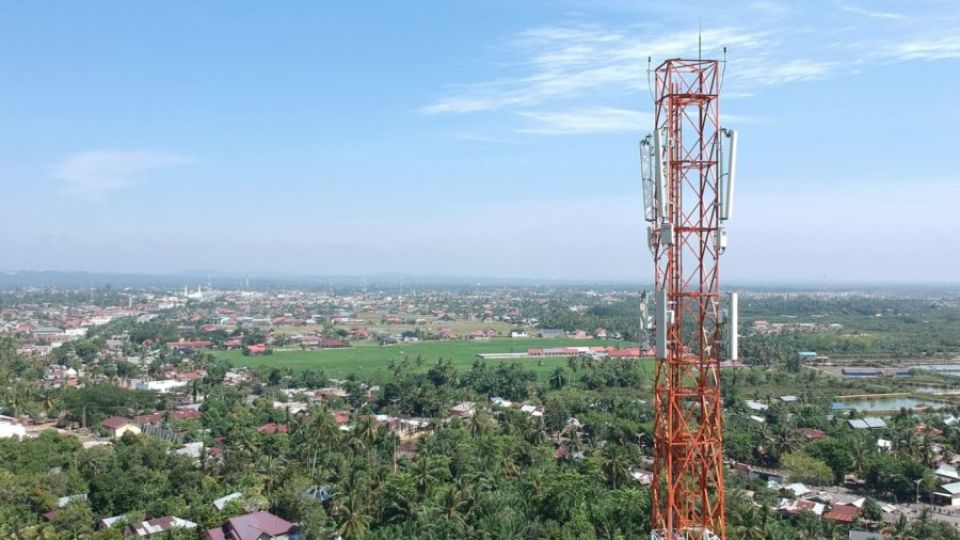January 19, 2023
JAKARTA – Telecommunication towers are set to remain lucrative this year amid worsening global economic conditions and challenges in the industry with firms aiming to tap potential in rural areas and in the country’s growing digital adaptation.
Huawei Indonesia information and communication technology (ICT) strategy and business director Mohamad Rosidi said on Friday that the rural areas have turned into potential markets thanks to increasing digital activity in the less-developed regions.
Indonesia internet users amounted to 204.7 million as of January last year, whereas before the pandemic the figure was only 150 million in 2019, according to a We Are Social report.
The growth in internet users was also followed by a rapid increase in overall digital-economy size that grew to US$77 billion of gross merchandise value (GMV) last year from previously just $41 million before the pandemic in 2019, according to a Google and Temasek report last year.
“Given that ICT access has turned into a primary need, coverage services will continue to exist this year,” Rosidi told The Jakarta Post.
Tower business falls into two categories, namely network-capacity services that focus mainly on optimizing each tower’s capacity and use and network-coverage services that focus on providing internet access in areas that are not yet covered through building infrastructure, which in this case consisted of, but was not limited to, towers.
Rosidi explained that while business performance on capacity services needed to be evaluated case by case, the coverage services would continue increasing each year.
Coverage expansion projects in rural areas will most likely grow in 2023, but Rosidi said it would depend on geographical factors and market potential, the latter determined by total population, purchasing power, population density and internet traffic, among many others.
Once it has been figured out, it could be translated into technical implementation and then the required investment number would follow, he said.
However, cities and suburbs are unlikely to see similar growth, as these areas already have well-established telco infrastructure, meaning demands will not appear much as well.
“In terms of new tower locations for big cities and suburban areas, [the projection] will remain relatively stagnant like 2022, unlike the rural areas,” Rosidi said.

Huawei displays BTS tower technology on Nov. 23, 2022 for students and visitors alike in Huawei ASEAN Engineering Academy Institute in Cilandak, Jakarta. (The Jakarta Post/Deni Ghifari)
Investment app Stockbit analyst Hendriko Gani said that tower businesses saw their earnings grow significantly throughout the first nine months of last year, but several challenges also slowed the growth quite a bit.
One factor stemmed from the merger of Indosat Ooredoo and Hutchinson 3, which was followed by tower relocations that impacted the market and earnings of tower companies, he said, adding the other would be worse macroeconomic conditions.
“Meanwhile, last year’s depreciation of rupiah against the dollar caused several issuers with dollar-denominated debt experiencing exchange-rate loss,” Hendriko told the Post on Jan. 12.
However, Hendriko expects the tower business to see a rebound this year as the foreign-exchange rate stabilizes and tower relocations from Indosat Hutchison lessen.
Moreover, the tower business had a structural fixed income and typically long-term contract, stretching to 10 years, positioning the industry to be less prone to price volatility and more resilient to external conditions such as macroeconomics or looming recession, he said.
State-owned telecommunications tower operator PT Dayamitra Telekomunikasi (Mitratel) saw its tower ownership grow to 35,051 units as of the third quarter last year from a year before at 28,079 units, marking expansion of its business.
With the recent figure, Mitratel has become the largest tower operator by tower count.
Large numbers of additional towers were acquired from Telkomsel in July 2022, which is known as an inorganic approach, as opposed to organic, i.e. building new towers, Mitratel said.
“Mitratel will remain focused and be aggressive in increasing the scale and profitability by both organic and inorganic strategies,” said Mitratel investment director Hendra Purnama on Tuesday.
“Investment in telecommunication towers remains very promising because the industry in Indonesia can still develop further,” he added.
Although 5G technology requires towers and Indonesia has been developing the network since May 2021, the new and faster internet services are unlikely to provide a boost to the telco tower business.
That is because 5G development will, in principle, utilize the already existing infrastructure, not new towers, explained Rosidi.
“We may see new towers for 5G infrastructure start to jiggle up this year, but not so much,” said Rosidi.
Telco towers in Asia Pacific will see a 3.74-percent compound annual growth rate for the next decade until 2031, which translates to roughly 2.4 million new towers erected within the period, a 2021 international rating agency S&P Global study estimates.
“Tower businesses will keep growing for at least the next several years. Tower business development is vital to broadband infrastructure reinforcement,” head of National Telematics Infrastructure at the Indonesian Telematics Society (Mastel) Sigit Puspito Wigati Jarot told the Post on Jan. 9.


